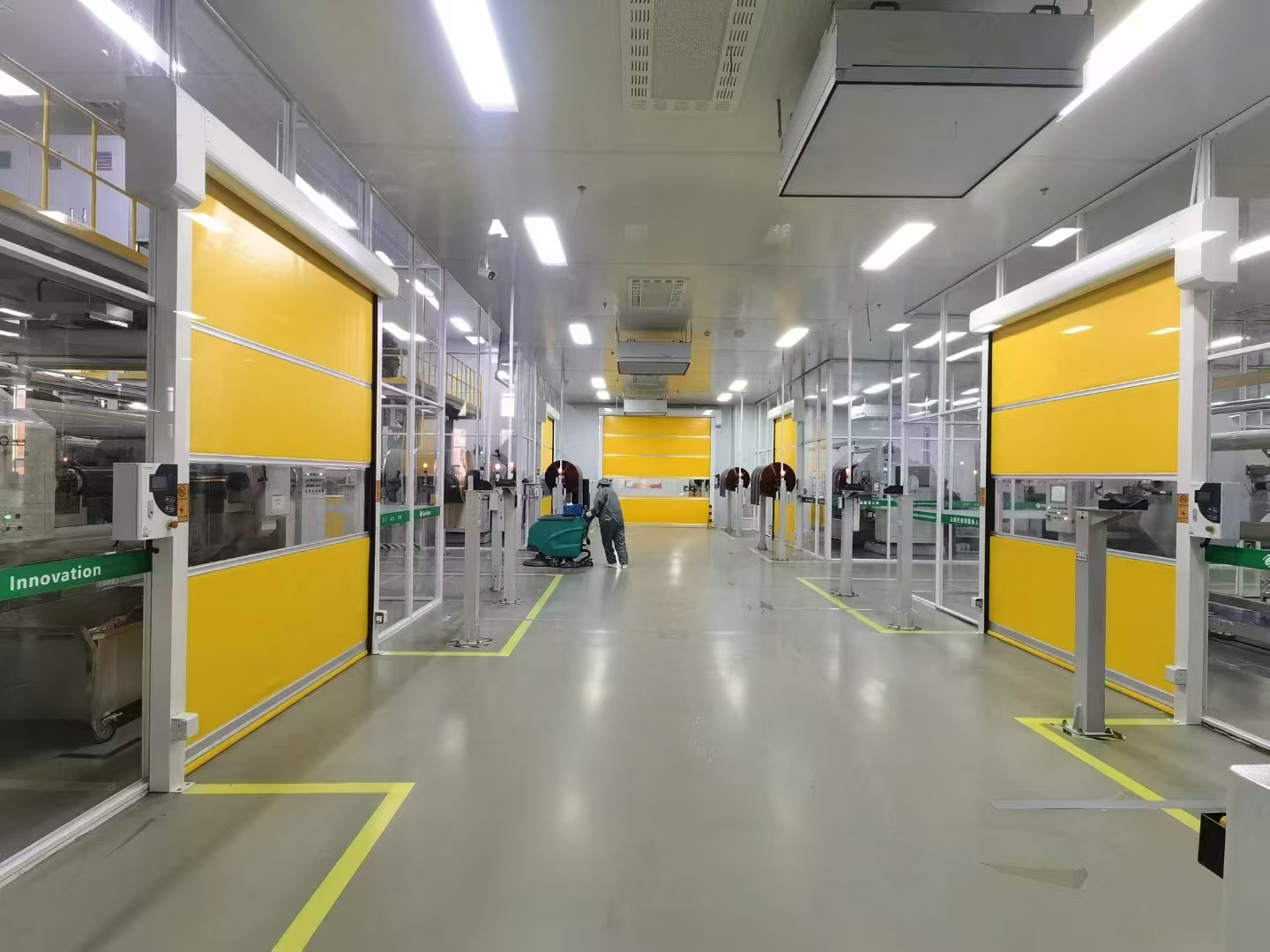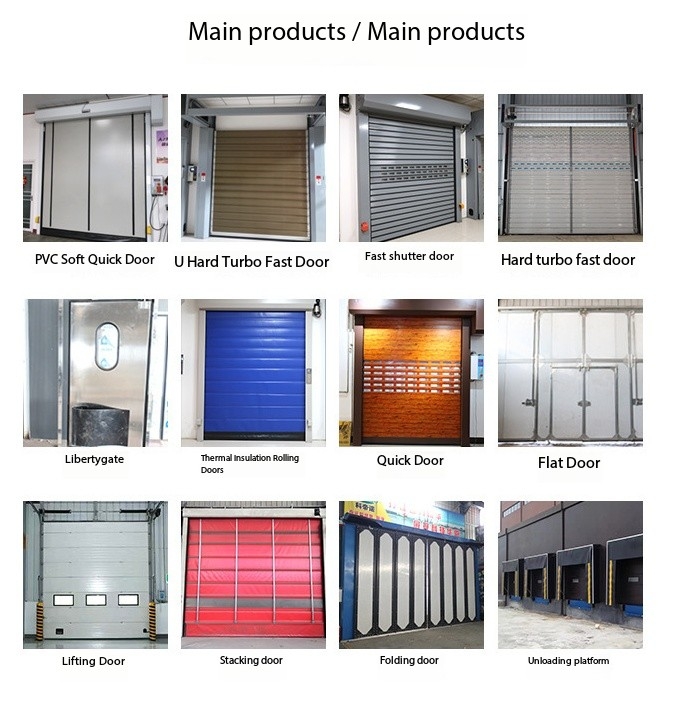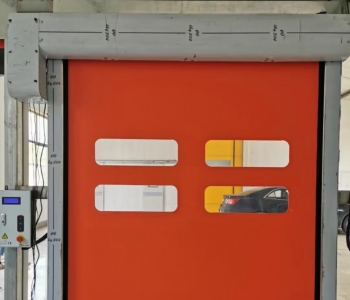Asian High-Speed Door Suppliers: Technological Innovation and Global Market Competitiveness
I. The Rise of Asia’s High-Speed Door Industry
Manufacturing Modernization Drives Demand
As the global manufacturing powerhouse, Asia’s logistics, food processing, and pharmaceutical industries demand high-efficiency door systems. High-speed doors, with features such as rapid opening/closing speeds (up to 1.5–2.5 m/s) and energy-saving insulation (reducing cold storage energy consumption by over 30%), have become essential for factories and warehouses.Cost and Supply Chain Advantages
Asian suppliers leverage economies of scale and localized supply chains to price their products at 60–80% of comparable European/American alternatives, while maintaining compliance with international certifications (e.g., CE, ISO 9001), ensuring a compelling price-to-performance ratio.Policy and Infrastructure Support
Government initiatives such as China’s “Intelligent Manufacturing 2025” and Southeast Asia’s “Industry 4.0 Plans” have accelerated investments in automation, fostering localized R&D and adoption of high-speed door technologies.

II. Technological Innovations in Asian High-Speed Doors
Material and Structural Advancements
High-Strength PVC and Composite Materials: Enhance tear resistance (withstanding wind resistance up to Grade 10) and temperature tolerance (-40°C to +70°C).
Modular Design: Enables rapid installation and customization for diverse industrial environments.
Smart and IoT-Enabled Solutions
Integrated Sensors: Infrared and radar technologies enable automatic vehicle/personnel detection, reducing failure rates to below 0.5%.
Remote Monitoring: Mobile app integration allows real-time tracking of door status and energy consumption, enabling predictive maintenance.
Energy Efficiency and Sustainability
Enhanced Airtightness: Dual-layer seals and inflatable bottom edges minimize thermal exchange.
Renewable Energy Integration: Solar-powered motor systems achieve carbon-neutral operation in select models.

III. Global Market Strategies of Asian Suppliers
Regional Market Penetration
Western Markets: Compete in mid-tier segments with cost-effective, customizable solutions, gradually displacing traditional European brands.
Emerging Markets: Dominate Southeast Asia and the Middle East through geographical proximity and agile service responsiveness.
Industry-Specific Applications
Cold Chain Logistics: Meet stringent temperature and hygiene requirements for pharmaceuticals and perishables.
Cleanrooms: Antibacterial doors achieve over 99% dust isolation for semiconductor and electronics manufacturing.
Smart Buildings: Integrate with Building Management Systems (BMS) for automated access control.

IV. Challenges and Future Trends
Intensifying Competition
Western competitors are expanding in Asia through localized production and patent strategies. Asian suppliers must prioritize proprietary R&D in core technologies (e.g., motor drive algorithms, software systems).Digital Transformation Opportunities
Digital Twin Technology: 3D modeling simulates door performance to optimize design.
Predictive Maintenance: Big data analytics minimize unplanned downtime by forecasting equipment lifespan.
Sustainability Imperatives
Tightening global ESG (Environmental, Social, and Governance) standards drive adoption of recyclable materials (e.g., bio-based PVC) and green manufacturing certifications.
V. Conclusion
Asian high-speed door suppliers have solidified their role in the global supply chain through technological innovation, cost efficiency, and adaptable service models. To sustain growth amid rising demand for smart and sustainable solutions, these suppliers must deepen their technological expertise and transition from “Made in Asia” to “Engineered in Asia.” For global buyers, partnering with Asian suppliers offers not only cost advantages but also access to cutting-edge, reliable door systems tailored to modern industrial needs.
Note: This analysis avoids brand-specific references, focusing on regional industry trends and technological advancements.
Recommended Products
up to date Automatic Door Accessories
- Explosion-Proof Reinforced Self-Limiting Electric Heating Belt
- Explosion-Proof Shielded Self-Controlling Temperature Electric Heating Belt
- Heating Belt for Anti-Freezing, Heating and Heat Preservation of Cold Storage Doors
- 40W flame retardant explosion-proof self-limiting electric heating belt
- High Speed Door Zippers Industrial Door Zippers
- Safety Beam Sensor Use for Automatic Door
- Wireless Hand Sensor Switch For Automatic Door
- Hospital Door Foot Sensor
- Automatic Sliding Door System Wireless Touch Press Switch
- Automatic Sliding Door IP65 Waterprooft Wireless Hand Press Switch
- Automatic Door Microwave Sensor
- Reflective Type Infrared Detector
- Automatic High Speed Door Infrared Radar Sensor CNB-204G
- Aluminum Alloy Wind Section For PVC rapid roller shutter door
- Aluminum Bottom Section For PVC high speed rolling shutter door
- Good Quality Door Hardware Strip Brush for High-speed Door Rail
- High Speed Door Fast Door Servo Motor Permanent Magnet AC-Synchronous Servo Motor with Worm Reductio







 English
English 한국어
한국어 日本語
日本語 Deutsch
Deutsch русский
русский بالعربية
بالعربية TÜRKÇE
TÜRKÇE português
português คนไทย
คนไทย Français
Français 简体中文
简体中文 繁體中文
繁體中文